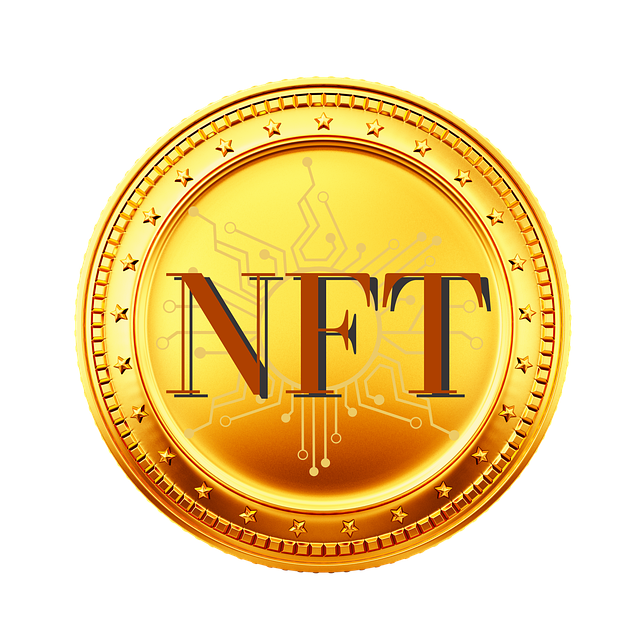Where Can I Earn Free Crypto: Practical Ways & Safe Strategies
Author: Jameson Richman Expert
Published On: 2025-10-21
Prepared by Jameson Richman and our team of experts with over a decade of experience in cryptocurrency and digital asset analysis. Learn more about us.
If you’ve ever searched “where can i earn free crypto,” this article gives a complete, actionable guide to legitimate ways to acquire cryptocurrency without buying it outright. You’ll learn about airdrops, faucets, learning rewards, staking, play-to-earn games, referral bonuses, microtasks, bug bounties, and yield strategies — plus realistic earnings expectations, security tips, and tax considerations to keep your gains safe and legal.

Why people ask “where can i earn free crypto”
Cryptocurrency interest has surged because small amounts of tokens can grow quickly and innovations keep producing new tokens and use cases. Many platforms offer incentives to onboard users: token airdrops to bootstrap networks, learning rewards to educate users, liquidity incentives to encourage DeFi participation, and referral programs to grow customer bases. Knowing which avenues are legitimate and how to protect yourself is essential.
High-level overview: legitimate free-crypto sources
- Airdrops and token giveaways
- Learning platforms (e.g., Earn programs)
- Faucets (tiny, frequent payouts)
- Staking & validator rewards (requires locking tokens but sometimes incentivized)
- Play-to-earn games and NFT drops
- Referral and sign-up bonuses from exchanges and wallets
- Microtask marketplaces and freelancing paid in crypto
- Bug bounties and developer grants
- Liquidity mining and yield farming promotions
1. Airdrops: how they work and where to find them
Airdrops are token distributions made by projects to early users, testers, or specific wallet holders to bootstrap adoption. Sometimes airdrops require minimal actions (like joining a community or holding a token on a snapshot date); other times they require active participation.
How to qualify for airdrops
- Hold certain tokens in your wallet at snapshot times (e.g., holding ETH or a protocol token).
- Use a protocol (swap, bridge, or provide liquidity) before snapshot dates.
- Complete simple tasks (follow social channels, sign up for newsletters).
- Participate in testnets — many projects reward testnet participants once mainnet launches.
Where to find airdrops: follow official project announcements on their website and Twitter/X; subscribe to reputable airdrop aggregators and communities. Always verify links and never share private keys. For general background on blockchain tokens and distribution, see the Bitcoin page on Wikipedia.

2. Learning rewards (Coinbase Earn-style programs)
Several exchanges and educational platforms pay small amounts of crypto to users who complete lessons or quizzes. These “learn-and-earn” programs are designed to educate new users while distributing tokens.
How to get started
- Create an account on a reputable exchange or platform that runs a learning program (e.g., Coinbase Earn historically).
- Complete KYC (know-your-customer) verification if required.
- Watch short videos and take quizzes to claim token rewards.
Pro tip: learning rewards are typically small per course but accumulate. Always use platforms with strong reputations and clear terms. For an overview of exchanges suited to active trading (and sometimes promotional offers), you can read this guide to the best crypto exchange for day trading, which also touches on platform features that sometimes run promotions.
3. Faucets: small but steady micro-earnings
Crypto faucets are websites or apps that give tiny amounts of crypto for completing simple tasks, like solving a captcha or viewing ads. Historically used for Bitcoin and altcoins, faucets are best for learning and building a wallet without risk.
What to expect
- Payouts are very small — often cents per claim.
- Faucets may require many claims to reach withdrawal thresholds.
- Risk: scams and excessive ads. Use well-known faucets and avoid ones asking for private keys.
4. Staking rewards and validator incentives
“Free” crypto in staking requires an initial stake, but some platforms run promotions or distribute newly minted tokens for participation. Staking helps secure proof-of-stake networks and typically pays rewards proportional to the stake and validator performance.
Types of staking
- Self-staking (you run a validator node — higher technical requirements)
- Delegated staking (delegate tokens to a validator via an exchange or wallet)
- Liquid staking tokens (receive liquid derivatives like stETH)
Staking often provides steady yields and sometimes airdrop eligibility. Before staking, read the protocol documentation and consider lock-up periods and slashing risks (penalties for validator misbehavior). For a broader view of trading tools and strategies, including uses of leverage and risk, see this comprehensive guide to what is leverage in futures trading — useful for traders looking to balance risk across earning strategies.

5. Play-to-earn games and NFT drops
Blockchain games and NFT projects often reward early adopters with tokens or NFTs that can be sold. Play-to-earn models let users generate rewards through gameplay, achievements, or contributions to the ecosystem.
Practical steps
- Research projects: check whitepapers, tokenomics, and community activity.
- Testnet participation: many games distribute tokens to testers.
- Watch for NFT airdrops if you hold certain in-game assets or NFTs.
Be cautious: the play-to-earn market is volatile, and many projects fail. Evaluate the game's economy, developer transparency, and player base before investing significant time.
6. Referral and sign-up bonuses from exchanges and wallets
Many centralized exchanges (CEX) and decentralized services offer referral bonuses or sign-up rewards. These are common and can be lucrative if you have friends or audiences to refer.
How to maximize referral earnings
- Compare programs: different platforms offer fixed bonuses, commission splits, or tiered rewards.
- Use promotional links responsibly and disclose affiliate relationships if you publish them publicly.
- Ensure referrals complete required actions (KYC, trade volume) to qualify.
Because exchanges often run campaigns that reward new users, it helps to understand trading features and fees. If you’re exploring exchanges beyond referral bonuses and want to learn about trading tools and strategies — including copy trading — this analysis on Binance copy trading may offer useful context for how social trading works and whether it fits your risk profile.
7. Microtasks, freelancing, and bounties paid in crypto
If you have in-demand skills (writing, design, coding), you can earn crypto by offering services on crypto-native marketplaces or being paid by clients directly in tokens. Microtask platforms also pay in crypto for small tasks.
Popular options
- Crypto freelance marketplaces and job boards
- Microtask sites that accept crypto payments
- Open-source project bounties and Gitcoin grants
Example: Gitcoin runs grants and bounties that pay contributors in ETH or project tokens. This route can be more consistent than airdrops and allows you to trade labor for crypto without the upfront purchase.

8. Bug bounties and developer grants
Security researchers and developers are regularly rewarded for finding critical vulnerabilities or building useful tools. Projects allocate budgets for bug bounties and grants — sometimes quite large.
How to participate
- Monitor project security pages and platforms like HackerOne and Immunefi for bounties.
- Follow scope rules carefully to qualify for rewards.
- Submit clear, reproducible reports and maintain professional communication.
Bug bounties can yield significant payouts for skilled researchers. Always verify program legitimacy and avoid legal risk by following responsible disclosure policies.
9. Liquidity mining and yield farming promotions
DeFi protocols incentivize liquidity providers with reward tokens. While not strictly “free” (you must supply capital), some projects offer initial incentive programs where participating early yields additional tokens or airdrop eligibility.
Risks and considerations
- Impermanent loss when providing liquidity
- Smart contract risk — use audited protocols
- Rewards may be taxable and volatile
Before supplying liquidity, analyze the tokenomics and check audits. Learn about liquidity pools and impermanent loss from reputable sources like Investopedia.
10. Faucets, browser mining, and ad-revenue sharing
Some browsers and ad platforms distribute crypto revenue to users for viewing ads or sharing browsing data (e.g., privacy-oriented browsers with BAT tokens). Browser mining (using CPU cycles to mine) has largely fallen out of favor due to low returns and device wear.
Consider privacy and performance impacts, and prefer platforms with transparent revenue shares and reputable teams.

11. Realistic earnings expectations
It’s important to set expectations:
- Airdrops and learn rewards typically yield tens to a few hundred dollars in token value for most users.
- Staking and yield farming can generate ongoing income but require capital and risk tolerance.
- Freelance and bug bounty routes can pay market-rate compensation in crypto and are often the most reliable way to “earn” significant amounts.
Always treat “free crypto” offers as a way to build exposure and learn — not a guaranteed path to wealth.
Security first: wallet safety and scam awareness
Many scams impersonate airdrops, giveaways, or support accounts. Protect yourself:
- Never share your private keys or seed phrase.
- Use hardware wallets (e.g., Ledger, Trezor) for significant balances.
- Verify project links and official social channels; use bookmark or direct domain navigation.
- Avoid signing arbitrary transactions from unknown dapps without reviewing the call data.
Tools like Etherscan (for Ethereum transactions) help verify token contracts and airdrop legitimacy. Always confirm contract addresses from official sources.
Tax and legal considerations
In most jurisdictions, earning crypto is a taxable event. Rewards, airdrops, staking income, and paid services in crypto typically count as income at fair market value when received. Keep records: transaction histories, snapshots, and screenshots of terms.
Check local tax authority guidance — for US taxpayers, the IRS guidance on virtual currency is an authoritative starting point. Consult a tax professional for personalized advice.

Practical, step-by-step plan to start earning free crypto today
- Set up a secure wallet: create a non-custodial wallet (MetaMask, Trust Wallet) and consider a hardware wallet for larger balances.
- Create accounts on reputable exchanges: complete KYC to access learn-and-earn and referral bonuses. See platform comparisons like the guide to the best crypto exchange for day trading to evaluate features and fees.
- Subscribe to official project channels and reputable airdrop aggregators; follow projects on Twitter/X and their official Discords/Telegram groups.
- Participate in testnets and learning programs — claim rewards and document receipts for tax purposes.
- Explore freelancing and bounty platforms (Gitcoin, Immunefi) if you have tech skills — these often pay more than passive methods.
- Use caution with DeFi: start with minimal capital, verify audits, and understand impermanent loss before supplying liquidity.
Advanced considerations for traders and automated strategies
Some users seek to amplify earnings through trading strategies, bots, and copy trading. These carry higher risk and are not “free” methods, but they can complement your free-token earnings if you want to actively manage assets.
Automated trading bots and communities
Trading bots—hosted on Discord communities or specialized platforms—can automate strategies. If exploring bots, pick trusted sources and understand the strategy, fees, and required permissions. For an overview of how automated trading bots are transforming investing, review this piece on Bitcoin bot Discord.
Copy trading and social strategies
Copy trading lets less-experienced users mirror the trades of seasoned traders. It can accelerate learning and results but exposes you to the trader’s risk. For context on ethical and compliance considerations, including cultural views, see this analysis of whether Binance copy trading is halal.
Leverage and futures — a warning
Using leverage increases potential gains and losses. If you’re tempted to use margin to grow small free balances, be extremely cautious. Understand liquidation mechanics, margin requirements, and fees. For traders wanting a deeper foundation, this guide explains what is leverage in futures trading in detail.
Note: Trading advice should be personalized; consider consulting a financial professional before using leverage.
Common scams and red flags
- Promises of guaranteed returns or “free” high-yield giveaways — avoid.
- Requests to sign transactions that transfer token allowances without clear purpose.
- Unknown DMs offering airdrops; always verify via official channels.
- Fake wallets or download links — use official app stores or project sites.

Curated list of reputable platforms & resources
- Coinbase Earn and official exchange learning programs — check the exchange’s official pages.
- Gitcoin — grants and bounties for open-source contributors (https://gitcoin.co).
- Immunefi — security bug bounties for blockchain projects (https://immunefi.com).
- Well-known block explorers (Etherscan, BscScan) to verify contract addresses.
- Authoritative references: Bitcoin on Wikipedia and tax guidance from your national revenue agency (e.g., IRS in the U.S.).
Case studies: realistic examples of earning free crypto
Case study 1 — Airdrop from testnet participation
Jane, a developer, participates in a DeFi protocol’s testnet by bridging assets and reporting bugs. The project snapshots active testnet participants and later distributes an airdrop worth $150. Jane’s actions required time and technical effort but no large capital outlay.
Case study 2 — Learning rewards plus referral bonuses
Alex completes several earn-and-learn modules on a regulated exchange, earning $40 in tokens. He also refers two friends who complete sign-ups and trades, receiving $50 in total referral bonuses. Combined, these activities yield $90 in tokens without purchasing crypto directly.
Case study 3 — Freelancing paid in crypto
Priya, a designer, offers services on a crypto-native freelance marketplace and earns $800 worth of stablecoins for a project. This route is steady income converted to crypto without market exposure to speculative tokens.
Final checklist: before you accept any “free crypto” offer
- Verify legitimacy: check project website, official social channels, and community reputation.
- Never share private keys or seed phrases; only sign transactions you understand.
- Document receipts of token receipts and snapshots for tax reporting.
- Start small: test new platforms with minimal exposure before scaling up.
- Prioritize audited smart contracts and reputable exchanges for custody and trading.

Conclusion: smart strategies to answer “where can i earn free crypto”
There are many legitimate ways to earn crypto for free — airdrops, learning rewards, faucets, testnets, freelancing paid in crypto, bug bounties, and referral programs are the most common. None are without risk, and most provide modest returns unless paired with skills or capital. Prioritize security, verify projects, keep tax records, and treat free crypto opportunities as chances to learn and diversify rather than guaranteed windfalls.
For readers interested in trading or automating strategies that can complement free-crypto tactics, explore the resources linked above about exchanges, copy trading, bots, and leverage to build a safer, informed approach.